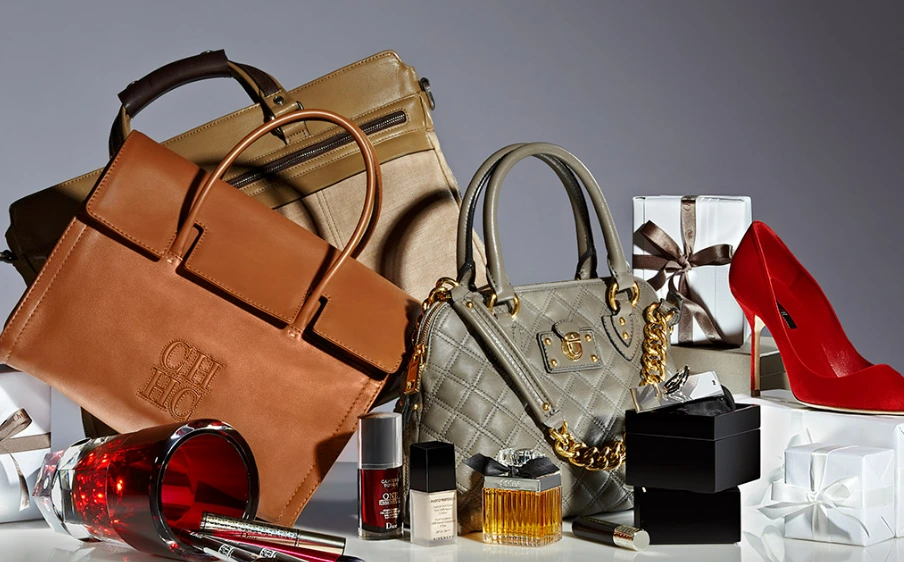In today’s luxury marketplace, opulence alone no longer captivates the discerning consumer. The true hallmark of luxury has evolved beyond mere ostentation to encompass something far more meaningful: authentic heritage and compelling storytelling. The world’s most prestigious luxury brands understand that what truly separates exceptional from ordinary is not just craftsmanship or materials, but the rich tapestry of history and narrative that accompanies each creation.
When we examine the most enduring luxury houses, a pattern emerges. These aren’t simply purveyors of expensive goods; they are custodians of legacy, artisans of experience, and masterful storytellers. The ability to weave compelling narratives around products transforms them from mere possessions into emotional investments and cultural artefacts.
This emotional connection proves particularly powerful in the realm of luxury travel accessories, where items become companions on life’s most memorable journeys. The finest travel accessories aren’t merely functional; they carry associations of adventure, sophistication, and personal identity. They whisper promises of extraordinary experiences awaiting the traveller who carries them.
Similarly, in the domain of sustainable luxury, heritage brands are increasingly incorporating environmental consciousness into their narratives. This evolution demonstrates how traditional luxury values can harmonise with contemporary concerns, allowing brands to maintain relevance while honouring their storied pasts.
The visual identity of heritage luxury brands also plays a crucial role in storytelling. The stories behind luxury brand logos often reveal fascinating insights into a company’s origins, values, and evolution. These visual signatures become instantly recognisable symbols that encapsulate entire histories and philosophies in a single, elegant mark.
The Psychology of Heritage Luxury Appeal
What makes heritage luxury brands so compelling to consumers? The answer lies in fundamental human psychology. We are, at our core, storytelling creatures who seek meaning and connection. Heritage luxury brands satisfy this craving by offering narratives that extend far beyond the transaction.
When consumers invest in heritage brands, they’re purchasing more than exquisite craftsmanship; they’re buying into a lineage, becoming part of an ongoing story. This association delivers profound psychological rewards, including:
- Identity reinforcement: Possessing heritage luxury items communicates personal values and aspirations
- Temporal connection: Linking owners to significant historical eras and movements
- Cultural association: Offering membership in exclusive communities with shared appreciation
- Legacy participation: Providing the satisfaction of preserving traditions and craftsmanship
Heritage luxury brands excel at creating what psychologists call “narrative transportation”—the immersive experience of being mentally carried into the story world. This transportation intensifies emotional response and creates lasting positive associations with the brand.
The Elements of Compelling Luxury Brand Storytelling
What separates memorable luxury brand narratives from forgettable marketing? The most compelling heritage stories typically incorporate several key elements:
- Authentic Origins
The foundation of heritage luxury storytelling begins with authentic origins. Whether humble or grand, the circumstances of a brand’s birth create the first chapter in its narrative. Consider Louis Vuitton, which began with a 14-year-old boy’s 400-kilometre journey on foot to Paris, or Hermès’ origins as a harness workshop serving European nobility. These origin stories establish the brand’s character and values.
- Visionary Founders
Heritage luxury brands often centre their narratives around charismatic founders whose personalities and principles continue to influence the brand generations later. Gabrielle “Coco” Chanel’s revolutionary approach to women’s fashion created not just a style but a philosophy that remains at the heart of the brand. Similarly, Enzo Ferrari’s passion for racing excellence continues to define the automotive company that bears his name.
- Pivotal Moments
Every compelling narrative includes turning points, and heritage luxury brands skilfully highlight these pivotal moments. Whether surviving wars, achieving royal warrants, or creating revolutionary designs, these milestones demonstrate resilience and innovation. Burberry highlights its outfitting of polar explorers, while Patek Philippe showcases its pioneering horological achievements.
- Artisanal Craftsmanship
The dedication to exceptional craftsmanship forms a central theme in heritage luxury narratives. Brands emphasise time-honoured techniques, generational knowledge transfer, and painstaking attention to detail. This focus on craft creates a powerful counter-narrative to mass production and disposable consumerism, positioning heritage products as investments rather than expenditures.
- Cultural Significance
The most resonant heritage luxury narratives extend beyond the brand to encompass broader cultural movements and historical contexts. By positioning themselves within cultural history, these brands elevate their significance. Ralph Lauren doesn’t just sell clothing; it embodies a particular vision of American style and aspiration. Similarly, Rolls-Royce represents not merely automobiles but a specific British tradition of excellence.
Digital Storytelling: Heritage Brands in the Modern Era
Today’s heritage luxury brands face the challenge of maintaining their traditional narratives while adapting to digital communication channels. The most successful have embraced this challenge, finding innovative ways to translate their stories to new media without compromising authenticity.
Digital platforms offer unprecedented opportunities for immersive storytelling. Virtual tours of historic ateliers, behind-the-scenes glimpses of artisanal processes, and interactive timelines of brand milestones all enable deeper engagement with heritage narratives. Meanwhile, social media provides venues for ongoing conversation about brand values and legacy.
The key to successful digital storytelling for heritage brands lies in maintaining consistency across channels while adapting content to each platform’s unique strengths. A brand’s Instagram might showcase visual heritage through archival photographs, while its YouTube channel might feature documentary-style explorations of craftsmanship. Throughout, the core narrative remains cohesive.
Balancing Heritage and Innovation
Perhaps the greatest challenge facing heritage luxury brands is striking the proper balance between honouring tradition and embracing innovation. Those who succeed recognise that heritage isn’t simply about preserving the past—it’s about extending legacy into the future through thoughtful evolution.
Hermès exemplifies this balance, maintaining traditional leather craftsmanship while exploring contemporary design collaborations. Similarly, Cartier preserves its iconic designs while incorporating modern materials and techniques. This approach acknowledges that true heritage isn’t static; it’s a living tradition that gains richness through careful adaptation.
The most forward-thinking heritage brands understand that innovation actually strengthens tradition when approached thoughtfully. By demonstrating how core values can manifest in contemporary contexts, these brands ensure their relevance for new generations while maintaining the authenticity that distinguishes them from newer luxury competitors.
The Future of Heritage Luxury Storytelling
As we look to the future, several trends are reshaping heritage luxury storytelling:
- Transparency and authenticity: Today’s consumers demand greater transparency about sourcing, manufacturing, and corporate values. Heritage brands are responding by opening their archives and production facilities, inviting consumers deeper into their narratives.
- Personalisation: Advanced technology enables unprecedented personalisation, allowing heritage brands to help customers create their own chapters within the brand story. Bespoke services and custom creations forge deeper connections between brands and individual consumers.
- Sustainability integration: Environmental consciousness is becoming integral to luxury narratives, with heritage brands highlighting traditional practices that naturally align with sustainability, such as durability, repair services, and responsible material sourcing.
- Cultural inclusivity: Heritage brands are reexamining their narratives through a more inclusive lens, acknowledging diverse influences and expanding their storytelling to resonate with global audiences while maintaining authentic connections to their origins.
- Virtual experiences: Emerging technologies like augmented and virtual reality offer new frontiers for immersive heritage storytelling, allowing brands to transport consumers into their historical contexts and craftsmanship processes.
Conclusion: The Enduring Power of Heritage Storytelling
In an era of constant reinvention and disruption, heritage luxury brands offer something increasingly precious: continuity, authenticity, and meaningful connection. Their stories provide anchors in a shifting cultural landscape, offering not just beautiful objects but vessels of meaning and tradition.
The most successful heritage luxury brands recognise that their greatest asset isn’t their products but their stories—the rich narratives that transform materials into meaning. By thoughtfully preserving and extending these narratives, they create not just consumer goods but cultural touchstones that resonate across generations.
As the luxury market continues to evolve, heritage storytelling will remain a powerful differentiator for brands that understand its significance. In a world where almost anything can be replicated, a genuine heritage cannot be manufactured—it must be earned through time, consistency, and authentic commitment to excellence. This is the true luxury that discerning consumers increasingly seek.
“The modern luxury consumer is more sophisticated than ever before, searching for depth beyond surface-level opulence. At LuxuryLeisureAffluence, we’ve observed that heritage brands which successfully communicate their authentic stories create the strongest emotional bonds with consumers. These connections transform purchases into meaningful experiences that extend far beyond the transaction,” notes Michelle Connolly, Founder of LuxuryLeisureAffluence.com.





























